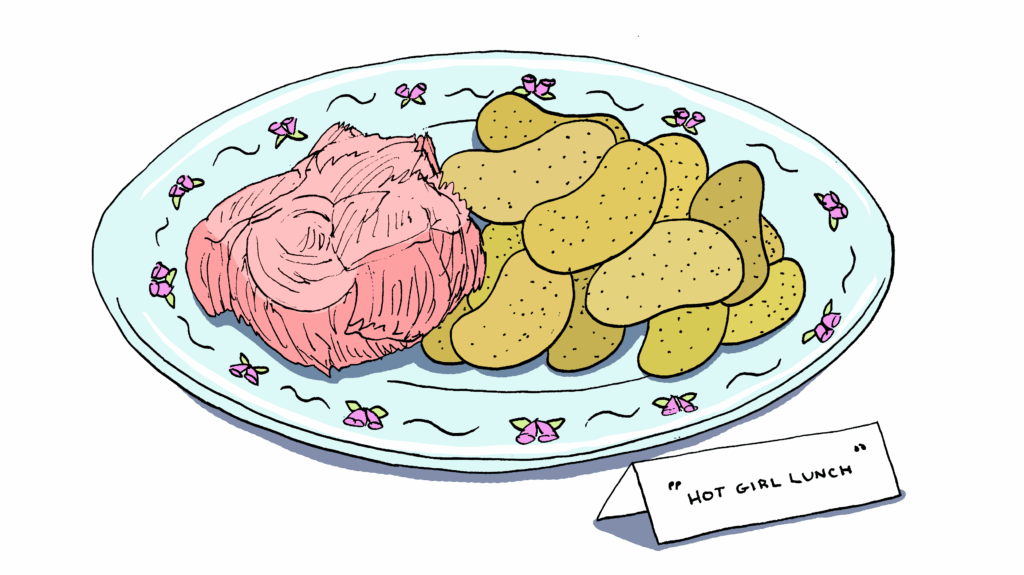
While upstart brands have leveraged a true cultural moment to achieve DTC success, questions remain about the sustainability of the fish as well as the industry.
Eight years ago, when I first started to pitch publishers on the idea of a cookbook about fish in cans, the response was a resounding, diplomatically phrased iteration of “Ew.” Here in the United States, sardines were a grandpa food. Tinned seafood was too weird, too niche, and not nearly aspirational enough for a “book-buying audience.” One pandemic, a Times Square sardine store, and many memes later, the tides have changed. Depending on who you ask, we are finally living in tinned fish heaven—or tinned fish hell.
“When I started working in tinned fish nearly a decade ago, it felt like shouting into the void,” admits Nice Cans founder Charlotte Langley, who was also a cofounder of Scout Canning. “People thought I was crazy [for] trying to romanticize sardines.”
Now everyone from fast fashion retailer SHEIN to the luxury brand STAUD is romanticizing sardines. One can buy a $1,670 embroidered sardine clutch at NET-A-PORTER, and this season’s Anthropologie window displays sport giant, sparkling sardine cans as backdrops. It’s hard to walk down the grocery store aisle or a city street without spotting a sign of tinned fish’s grip on the culture, whether it’s a new twee can design for a mass-market product or a dedicated tin menu at a small-plates wine bar. (In New York alone, you can order conservas at Maiden Lane, El Pingüino, Bibliotheque, Good Guy’s, and Tin Parlour, to name just a few.) Even celebrity chef José Andrés announced that he was getting into the tinned fish game just last month.

In other words, the backlash was inevitable. Cue the tweets and TikToks about tinned fish having a disheartening “recession energy.” Cue the simultaneous groans about the shocking $20 to $50 price tags on many imported conservas (and the resulting markups for those premium products at bars and restaurants). New York magazine writer Tammie Teclemariam called tinned fish “the biggest scam” of 2022. In 2023, restaurant critic Ryan Sutton wrote that “you can usually skip the tinned fish when dining out.” That same year, Eater writer Amy McCarthy called for an end to the trend of glorifying one of the most “overrated” foods in the world, writing, “Is this really a luxury ingredient, or does it just look cool on Instagram?”
As the author of a book on the subject, it would be easy for me to take all this personally —America’s obsession with tinned fish is paying me royalties, after all. But I too have felt a bittersweet twinge on occasion, watching a once-nerdy pursuit become corporatized.
For me, tinned fish was never meant to be something we incorporate into every meal and every outfit, every day. Sometimes I see a brand trying to convince me to make canned albacore nachos, and I think to myself, “I don’t even want that. We’ve taken this thing too far.” At times, I see a grocery store tin brand marked up 100% on a menu and I’m reminded of a Willy Staley tweet from years ago about a fictional (but all-too-plausible) Bushwick restaurant dish: “We dump a can of Ortiz tuna onto a cool-looking plate with a bunch of Cape Cod chips. It costs $30 and it’s called ‘Hot Girl Lunch.’”
“A $30 tin of Spanish conservas on a restaurant menu has always felt basic to me—and I’d say the same thing about a $120 tin of caviar,” Sutton tells me. “They feel like easy, phoned-in luxuries, for the most part.”
“I don’t generally find restaurants to be as fluent in talking about tinned fish as they are about wine. I don’t typically leave a restaurant saying, ‘Wow, I need to try that exact tin again,’ the way I might get excited about a grower Champagne that a sommelier waxes poetic about,” he says. Sutton will make the occasional exception at restaurants like Cart-Driver in Denver. “They pair the conservas with hot sourdough piada, black olive butter, and a sambal pepper relish—it’s nothing I can make at home!”
Even members of the internet’s long-standing tinned fish community have mixed feelings about their hobby going platinum. Reddit user u/mikeczyz tells me that he started the r/CannedSardines subreddit in 2017 after a comment from his doctor sent him down a rabbit hole, trying to learn more about this category of food and introduce more of it into his diet. Now the subreddit (which he still moderates) has about 117,000 members, and the number of daily posts has increased dramatically since I joined it in 2021. I asked u/mikeczyz how he feels about canned fish becoming such a massive phenomenon.

“I wouldn’t say it’s gotten out of hand, but parts of it feel pretty far from where it started. The visibility is great: more access, more brands, more creativity, and it’s cool to see the converts,” he tells me. “But I do miss when it felt like a bit of a hidden gem, and the whole aesthetic push, especially from fish-fluencers, can sometimes feel a little performative. I just hope the heart of it—simple, satisfying, good food—stays at the center as it grows.”
Matthew Carlson, who has posted popular sardine tasting videos on YouTube since 2018, has noticed some shifts over the years in how his audience reacts to his videos (like the time a few years ago when they all seemed to suddenly turn against soybean oil), but for the most part, he says, “the ‘trendiness’ has sort of passed me by.” His theory about why?
“My analytics put my viewership at 90% male,” he says. “The mainstreaming of tinned fish seems very female-oriented, based on the styling of all the tote bags, pillowcases, and cute outfits. Oh, yeah, and the whole Fishwife phenomenon!”
Indeed, when I first met Fishwife founders Becca Millstein and Caroline Goldfarb in 2021, their approach to branding and marketing stood out from competitors specifically because it was aimed at women. There was the brand’s name (a nod to a historic slang term for a foulmouthed woman), its playfully illustrated logo (a woman transporting a basket of fish on her head while smoking a pipe), and the founders’ insistence that tinned fish was “a hot girl food.” In a Shark Tank appearance in 2023, Millstein shared that the company had made $2.6 million in 2022 and was on track to make $5.8 million in 2023. Now the colorful, cartoon-coated tins can be found at Target, Whole Foods, Wegmans, and even Costco.
“Over the past few years, I’ve seen a shift from surprise to curiosity,” says Meijie Liao, who creates videos on Instagram and TikTok about fermentation techniques, unconventional ice cream flavors, and conservas. “Initially people were shocked—‘You eat this straight from the can?’ Now that almost taboo food has become something to collect and share.”
“I wouldn’t say it’s gotten out of hand, but parts of it feel pretty far from where it started.”
Still, Liao says, it’s easy for the nuance to be lost in all this newfound interest. “Craftsmanship and generational knowledge get harder to honor when traditional conservas are grouped together with mass-produced tins wrapped in flashy branding,” she says.
“Sustainability is another downside. As demand skyrockets, the pressure to produce quickly and cheaply can erode sourcing practices. In Galicia, legacy producers are already operating at full capacity within fishing quotas, yet they feel they’re losing market share as interest peaks. Meanwhile, domestic canneries need to find skilled labor to meet the demand.”
Langley agrees, calling the mainstreaming “both a blessing and a responsibility.”
“With popularity comes dilution,” says Langley. “You get a lot of trend chasing without respect for the origin, the culture, the process. When something becomes ‘a vibe’ or an aesthetic, it risks losing its integrity—especially when new players don’t hold the same values around sustainability, transparency, or even taste.”
For Langley, who grew up immersed in the fishing culture of Prince Edward Island, the tinned seafood craze can feel detached from any sense of heritage. “When I see the trend reducing conservas to ‘quirky little fishies in cute cans,’ I worry it misses the depth and cultural weight of this food tradition.”
The trend isn’t showing any signs of slowing down at the moment, and the global tinned fish market is projected to hit $44.27 billion by 2030. A good chunk of that money will go toward the Bumble Bees and StarKists of the world—and the era of “protein maxing” most certainly has something to do with this spike. Still, this growth may be a sign that consumer interest (and consumer education on qualities like the sustainability of tinned seafood) is increasing overall, making room for newer upstarts in the industry and for smaller North American companies like Nice Cans, Wildfish Cannery, Island Creek Oysters, and Great Lakes Tinned Fish, which are meeting some of this demand with lesser-known species and small-scale fishing practices.
“Retailers are finally taking canned seafood seriously,” says Langley. “Consumers are recognizing the culinary and nutritional value of sardines, mussels, tuna belly—seeing it as more than just survival food.”